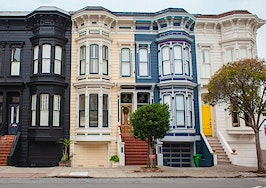Showings overall continue to increase, as this homeselling season plows on into the fall, but virtual tours (meaning any tours conducted online) have not increased at the same pace, according to the latest data shared by ShowingTime, a leading listing showing management and real estate data platform.
In a press release, the company’s August, 2020 ShowingTime Showing Index stated a 61.9 percent increase in year-over-year home showings, whether that be in-person or online. That jump is the most recorded within the typical summer real estate market (May-September).
The index derives findings from an average of more than 6 million scheduled showings across the country each month.
The real estate market took a surprising jump in the midst of a pandemic, largely fueled by growth in more rural and suburban markets, and of course, exceptionally low mortgage interest rates. Curbside closings and digital closings also became much more common.
ShowingTime data revealed that the number of showings per listing continues to climb, furthering the argument that buyer demand is not ceasing and that inventory levels remain low.
Although showings conducted online, whether via a recorded tour or live agent walk-through, are counted in the company’s total number of home tour numbers, they aren’t increasing in conjunction with overall growth, according to ShowingTime President Mike Lane. He said his company’s software has a function to designate if a tour is being conduced online or physically in-person.

ShowingTime President Michael Lane
In a phone call with Inman, Lane shared numbers for the past several months of online home showings.
“[Virtual tours] are in our index and are a very small sliver of total showings. I was hoping to tell you they were going through the roof, but the reality is that virtual showings went up in July and have come down in August and September,” Lane said. “You could argue a bunch of reasons for that, but you would think they’d be going up if [in-person] showings were going way up. Virtual showings are not going up at the same pace.”
In June, the company reported 5,300 video tours, 13,000 in July, and 8,700 in August. Of a total 7 million showings managed in September, 9,400 or 0.13 percent, of all showings were done over video.
ShowingTime does not track the technology agents use to conduct online tours, but Lane did say another tool the company implemented might partially explain the unexpected drop in online tours.
“We put in a tool that many MLSs have taken advantage of,” he said. “It forces a buffer window between appointments, and they require that nothing be scheduled 30 minutes before or 30 minutes after a showing. Many markets have done that to let agents feel more secure about going to the home.”
The National Association of Realtors is also reporting growth in August. Existing-homes sales are up 2.4 percent, according to the trade group, and at their highest levels since December 2006. Pending home sales are up 8.8 percent.
Both NAR and ShowingTime data demonstrate that the Northeast led in sales and showing activity growth, but NAR reports the South remains tops in overall number of existing-home sales.
The Northeast region saw the largest gain for the third consecutive month, with a 73.7 percent increase in showing traffic, according to ShowingTime stats. The West was next in growth at just over 55 percent.
Median home price nationally is up the most year over year as well, according to NAR, at around 11 percent.
The pandemic greatly affected home sales and showings from mid-February through May 2020. However, come summer, showings equalized and began to increase in pace above the same time in 2019, when taken as an average in ShowingTime’s Top 100 markets.
Back in March, a study by real estate brokerage Redfin found virtual showings climbed by 500 percent in a single week. However, the pandemic’s impact was only beginning to take hold.
As a percentage of total tours scheduled for Redfin listings, Redfin PR Senior Manager Angela Cherry told Inman in an email that “generally video-chat tours have represented about 8-10% of Redfin’s overall tour requests for the past couple of months.”
Lane cited that early into the pandemic, many states did not consider real estate an essential business, so many markets around the country were forced to conduct business online.
The drop in online tours as a percentage of total showings also suggests that brokerages and consumers are more comfortable conducting business in person and that home tours conducted over the internet may still be thought of as marketing value-adds as opposed to an emerging new standard, or to exercise a cliché, the “new normal.”
Have a technology product you would like to discuss? Email Craig Rowe
Craig C. Rowe started in commercial real estate at the dawn of the dot-com boom, helping an array of commercial real estate companies fortify their online presence and analyze internal software decisions. He now helps agents with technology decisions and marketing through reviewing software and tech for Inman.

























